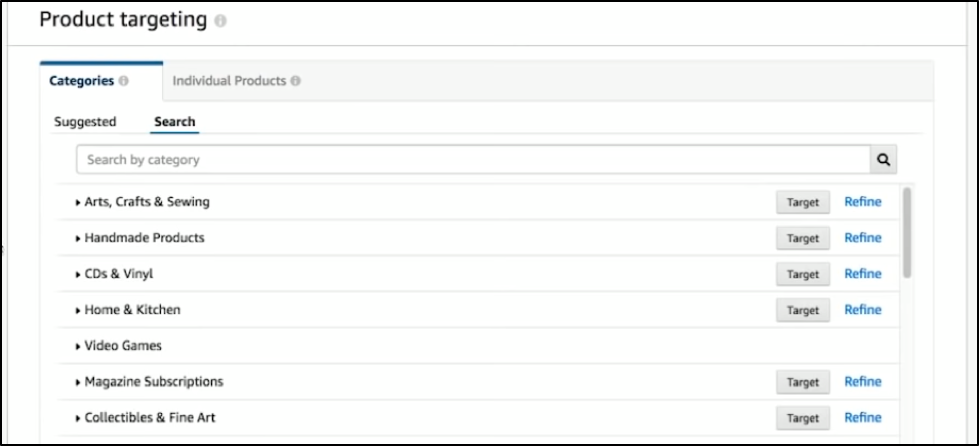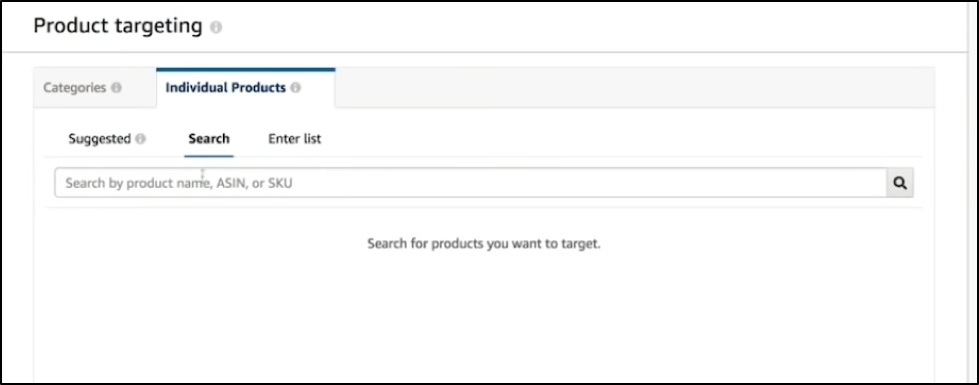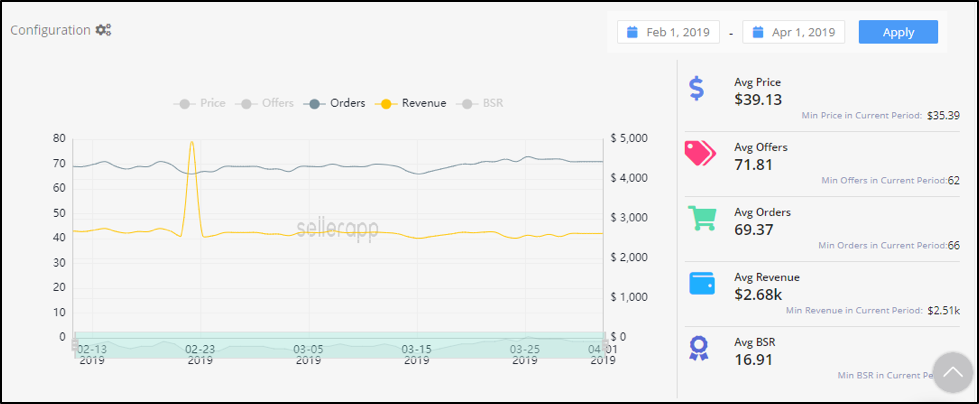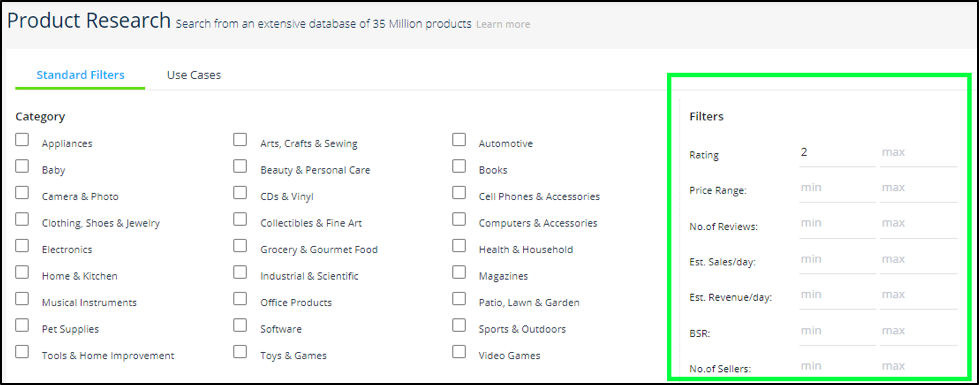At the start of the year, Amazon rolled out new updates for the Sponsored Products feature wherein sellers can now target specific products and display the ads on their listing pages. Commonly referred to as Product Targeting, this feature has given much more control to sellers in the way they advertise their items on the Amazon marketplace.
Simply put, Product Targeting is an extension of Product Display Ads, where you create ad campaigns targeting specific products, categories, and brands to display your ads. You can further refine your campaigns with attributes like price range and star ratings. With this, you stand to boost your visibility by targeting your top-selling rivals and more importantly, get a piece of their market share.
For example, let’s say that you are selling men’s watches on Amazon under your brand. You want to increase your brand awareness and drive more conversions for your watches. In addition to running your usual automatic and manual campaigns based on keywords, you can now create campaigns that will display your product ads in the following pages:
- Broad product categories, which can be refined based on brands, prices, and ratings.
- If you are selling digital watches, then refining your search to digital watch product category is a sensible option. You have the opportunity to tune it further by making sure that your ads are displayed only on those product listings that have a rating of more than four stars and so on.
- Individual ASINs that may be your top competitors and substitutes/complementary to your products.
Needless to mention, the control you exercise here is much more. You can decide where you want to display your ads with utmost precision. With some proper market research and understanding of your competition, you can very well use this feature to your advantage.
How to Create Product Targeting Ads?
Creating a Product Targeting Ad is pretty similar to creating an ad campaign on Amazon. The first thing you need to do is log in to your Seller Central Account. Once there:
- Visit the Advertising section and click on Campaign Manager.
- Since it is a feature of Sponsored Products, head into this section.
- Enter the necessary details like start end, end date, daily budget. You need to choose Manual Targeting since you will be the one to decide where your ads will be displayed.
- Scroll down to the ad group section, where you choose the ad group name and products you want to advertise.
- This is where things get interesting. You have two targeting options – Keywords and Product. You need to choose Product Targeting.
- Based on the products you have chosen previously, Amazon will suggest categories for you to target. Alternately, you can search for them manually, as seen here:

- You can dive deeper into each product category and subcategories to target a niche most relevant to your product.
- The other option you have is to target individual products. Once again, Amazon will give you suggestions, or you can go about searching for them manually:

- If you have a list of ASINs you want to target already (if not, we will tell you how to get that in a few), you can enter the list directly.
- And that’s it! Hit the launch campaign button, and you are all set.
Now, here is the tricky part about Product Targeting Ads: You are likely to spend a lot of money on unwarranted clicks since the ads are displayed to a much wider audience. The intent of purchase here is rather diluted and therefore, you may incur a high ACoS. That said, your brand awareness and visibility in the market will improve substantially.
Strategies to Dominate Amazon PPC with Product Targeting
To help you make the best of Product Targeting on Amazon, we have compiled a list of some tested strategies. Let’s take a look.
1. Make a List of Relevant ASINs to Target
As mentioned earlier, the success of your Product Targeting Ads will depend on how well you understand the market you are after. You need to be aware of all the top rivals and their best-selling products, so you know which ASINs to target. There are three ways to go about this:
- Head to Amazon.com and enter the name of the product you want to focus. Amazon will display a list of ASINs that it feels are most relevant to your query. These ASINs are likely to carry a good number of stellar reviews and competitive prices. Of course, this process will be time-consuming since you need to inspect all the rivals one by one.
- You can make use of SellerApp’s Product Research feature to analyze your rivals more astutely. With the tool, you will be able to pinpoint the ASINs you wish to go after by looking at its past performance in terms of orders, reviews, revenue, Best Sellers Rank, and price. This data-driven analysis of the market and competition will enable you to make smart decisions regarding your Product Targeting Ads.

- You can also use this feature to target the competing products that are inferior to you, that is, the products on which you hold a clear advantage. It may be in terms of price, number of reviews, a superior rating, et cetera. Filter the searches based on these parameters and display your ads on the listings of those ASINs. Remember – your product needs to be better in one way or another than the targeted items.
- When a customer visits their page and realizes that there is a better product with superior ratings and price, you will stand to land that sale. It is pretty much similar to driving traffic away from your underperforming rivals.

- If you are running automatic campaigns, then chances are your ads must have been displayed on listings of other similar products. Amazon does this automatically to provide your products with more exposure. From your search terms report, identify the ASINs for which your ads have performed exceptionally well – we are talking about high conversion rates. Take those ASINs and target them manually in Product Targeting Ads.
- You should also look into targeting relevant brands. Since they have a good amount of traffic coming their way, it is not a bad idea to capitalize on some of it. Identify the brands that are investing heavily on Headline Search Ads. Once you do that, select the products that are similar to yours in terms of pricing and ratings – use the Refine option available in Product Targeting to do so. These category refinements will allow you to restrict your ads only on a fixed set of items.
- For best results, it is recommended that you target all the ASINs gathered from the above steps. With this, you will cast a wider net, per se.
2. Target Your Own Products
This is a crafty way to retain your customers and have them stay within your brand. The objective here is to display your ads on the listings of those ASINs that are a part of your brand. A major advantage of this PPC strategy is it keeps the competition off your product pages, and you get to cross-sell your products.
There are many ways to go about this, but the most preferred option is to identify your top-selling ASINs and target them. Since these are ASINs that are most popular within your brand, it makes sense to create a funnel to your other products, starting with them. You can also use this strategy to push your underperforming products.
Note: In addition to product targeting, you should also make sure that you have an optimized listing for landing conversions. After all, you don’t want people to click on your ads and visit your listing, just to go away, right?
3. Target Products that Show up in Google Ads
Often, when we search for a product on Google, its ad for Amazon is likely to appear at the top of the page. Since the visibility on Google is much more in comparison to that on Amazon, a good idea is to target these kinds of products. Identify the Amazon products that appear directly on Google’s first page for your keywords and target their ASINs.
Similarly, you may also wish to target competing ASINs that are being promoted heavily on social media platforms. Of course, it will take some research to identify these items, but the effort will be worth it. In a cutthroat world, no marketing strategy should be left behind, including the ones where you get to display your ads on those product pages that receiving a lot of attention.
4. Identify the Product Categories to Target
In addition to your main product category and subcategory, you also need to look at other relevant categories you can target. In our previous example of men’s watches, you can look at categories like Gifts, Men’s Fashion, et cetera. You can start initially with a small budget and see how they convert. Based on the results, optimize the campaign further for improved performance.
5. Pay Attention to Negative Targeting
Negative Targeting is a feature that allows you to improve the efficiency of your campaigns by listing ASIN/keywords/Brands for which you don’t want to display your ads. There may be times when it will be difficult for you to land conversions from an ad that is displayed on the listing of a huge, famous brand. As it is likely to result in a wasted ad spend, a more feasible option would be to not display your ads on that page. You should also add those items that you do not want to compete with.
Final Thoughts
Amazon PPC has evolved considerably since the day it was launched. Sellers have now got a lot of options to cleverly market their products, including the now-popular option of Product Targeting. The strategies mentioned here will help you efficiently navigate this exciting world although, you may need a good budget for that. You should also look into advanced PPC strategies for Amazon to help you master Sponsored Products on the whole. A meticulous combination of all such strategies and features will bear good rewards.
More than this, you can consider choosing SellerApp as your analytics solutions partner for your Amazon business. They offer a comprehensive suite of packages addressing every aspect of the business, including PPC. Their state-of-the-art data driven solutions will help you reduce your ACoS, save time, and improve your ads’ efficiency. The core data is provided in a simplified, easy-to-understand manner, so you don’t have to spend hours on excel sheets. With SellerApp, you will eliminate negative keywords, create targeted ads for top-performing keywords, get extensive insights into the ads, and master the art of running ad campaigns.
Improve your cash flow today
Apply to get daily payments and capital for your growing business in as fast as one business day. No credit checks or external documents required.
Need more information? Call us at (646) 494-8675 or email sales@payability.com


